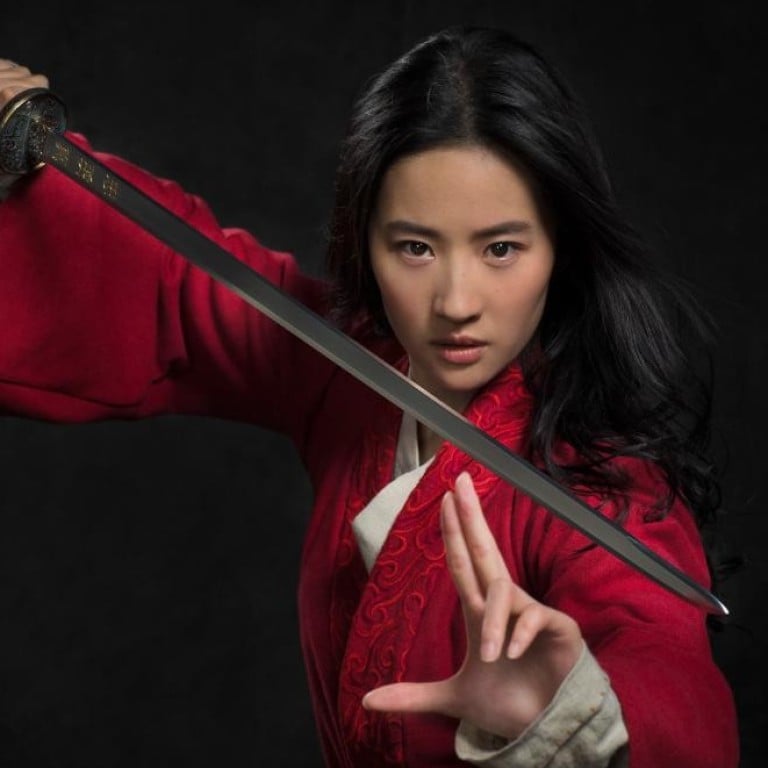Forget Bruce Lee and Ip Man – Mulan and 4 more female Chinese martial arts masters who could fight with fists of fury

When it comes to Chinese martial arts, everyone’s heard of Ip Man and Bruce Lee, but what about their female counterparts? While a little less spotlight may be thrown on them, several female martial arts masters have emerged over the years that can stand blow-for-blow alongside their male counterparts.
From swordsmanship to tai chi and animal-style kung fu, meet these five incredible women who mastered martial arts as completely as anyone.
Yuenü
Known as the best swordsman – or shall we say, swordsperson of her time – Yuenü allegedly beat 3,000 other swordsmen during a seven-day contest organised by the king of China’s Zhou kingdom during the “spring and autumn” periods (770BC-AD221). Her approach to fighting was Taoist in nature – avoiding confrontation to maintain the element of surprise.
She is quoted as saying, “When fencing, though highly alert, the appearance is as calm as a fair lady’s. But when in action, a vicious tiger emerges”. Her win showed that martial arts isn’t only about brute strength, and that the mind, spirit and skill play vital roles. Yuenü’s sword methods and philosophies are studied to this day and passed down among martial artists, making them well over a thousand years old. She is also a popular subject in stories, theatre and film.
Which stars do martial arts – and which should you do?
Princess Minglian
The daughter of the Chinese Emperor Liang Wudi, Princess Minglian was known for her exceptional skills in qi gong, martial arts and herbal medicine. She lived during the Southern dynasties (AD420-589) and became interested in the Dharma, which led her to follow the Buddhist monk and first Chan patriarch, Bodhidharma, to the Shaolin Monastery, where she became the only female of his four closed-door disciples. Eventually, she was given a nunnery (Minglian Monastery) by her father where she could practise as a Buddhist nun without any men around.
Minglian Monastery was renamed Yongtai Monastery, which has evolved into the Yongtai Monastery Female Wushu School, the only all-female Shaolin wushu school in China. With only female students and coaches, the centre has been formally approved and established by the Physical Culture and Sports Commission and the Educational Commission of China.
How Bruce Lee inspired China’s UFC champ Zhang Weili
Mulan
Many people have heard of Mulan thanks to the Disney animated movie, but not many can separate legend from fact. While the truth about Mulan may never be known, she first appeared in a Chinese poem written in the Northern dynasties (AD420-589), then in a novel from the late Ming dynasty (AD1368-1644), and later in a play from the Qing dynasty. Surnamed Hua, which means flower, Mulan is a legendary Chinese heroine who is best known for disguising herself as a man to take her father’s place in the army. Brave and courageous, she won many heroic battles before returning home to live a peaceful life with her family.
Today, Mulan is honoured with a form of tai chi named after her (Mulan Quan, aka Orchid Fist). Developed by Ying Meifeng from Shanghai, this graceful and feminine style of tai chi is the only one developed by a female master exclusively for women.
Are you a Conor or a Manny? Which combat sport is right for you?
Wu Mei (Ng Mui)
Considered one of the “Five Elders” of southern Chinese kung fu, the group that survived one of the Shaolin Temple destructions in the Qing dynasty (1600-1700), Wu Mei – also known as Ng Mui – was highly skilled at Shaolin martial arts, Wudang martial arts and Yuejiaquan. The legendary Shaolin nun is credited with being the founder of the martial art Wu Mei Pai (Ng Mui style), Wing Chun Kuen, Dragon style, White Crane and Five-Pattern Hung Kuen.
Using creatures as inspiration, Wu Mei and another disciple of the Siu Lam Monastery, Miu Hin, created a fighting style by observing the way that animals such as birds and snakes jumped, advanced and retreated by using their wings, beaks and claws. This kung fu system became known as the Five-Pattern Hung Kuen, a set of animal movements adapted for human limbs.
Why Hong Kong star JuJu Chan gets a kick from Bruce Lee
Yim Wing-chun (Yan Yongchun)
Born and raised in Canton (Guangdong) province, Yan Yongchun (1662-1722) – better known in English as Yim Wing-chun – was a disciple of Wu Mei, and studied under her for many years. Her style of fighting was adapted for smaller and less powerful fighters, and became an extremely efficient form of kung fu. Yan taught her own martial arts form to her husband, Leung Bok-chau, who shared it with an opera performer Wong Wah-bo, and eventually it reached a man named Yip Man (yes, that Ip Man), who later became famous as Bruce Lee’s teacher.
Want more stories like this? Sign up here. Follow STYLE on Facebook, Instagram, YouTube and Twitter .

Yuenü allegedly beat 3,000 other swordsmen at a contest during the Zhou kingdom, Mulan has a form of tai chi named after her, and Wu Mei created a kung fu fighting style based on animal movements and adapted for human limbs